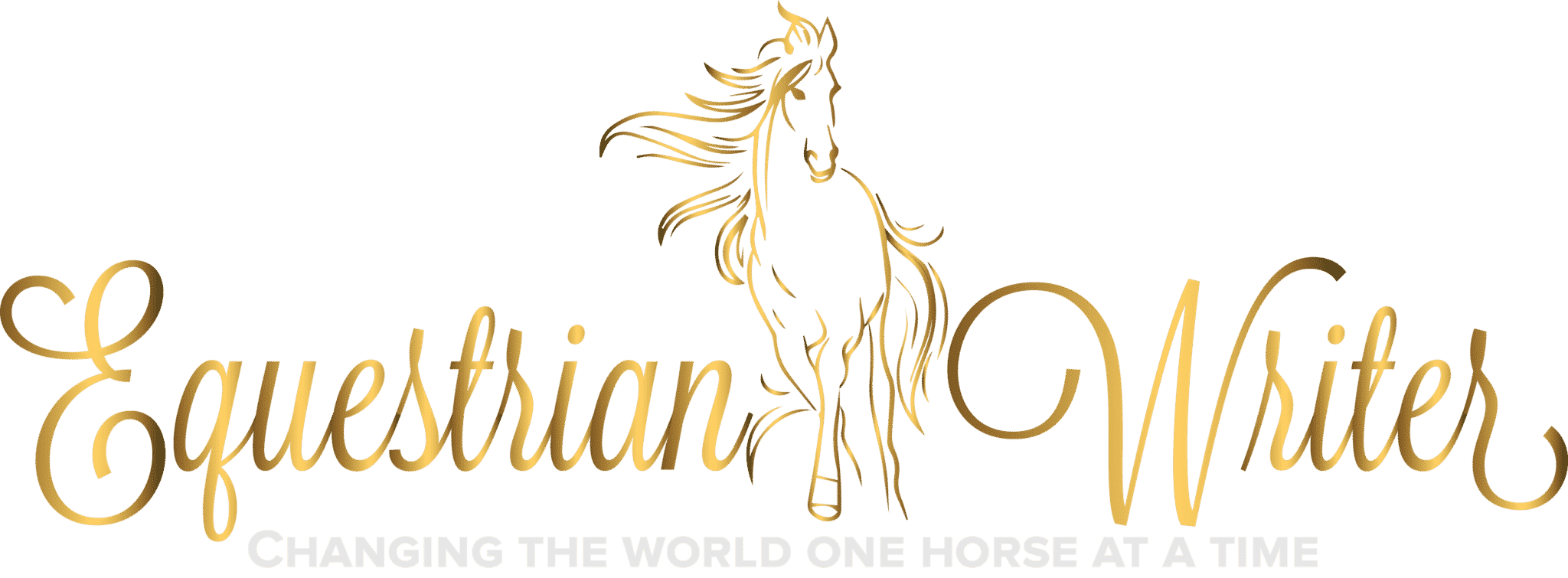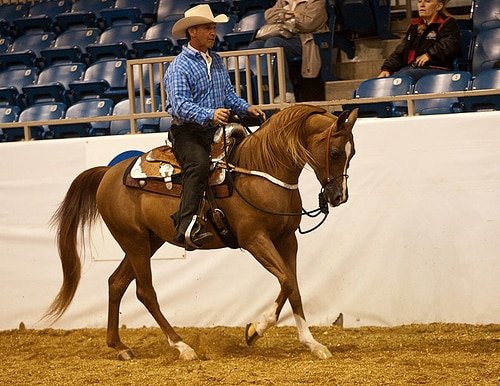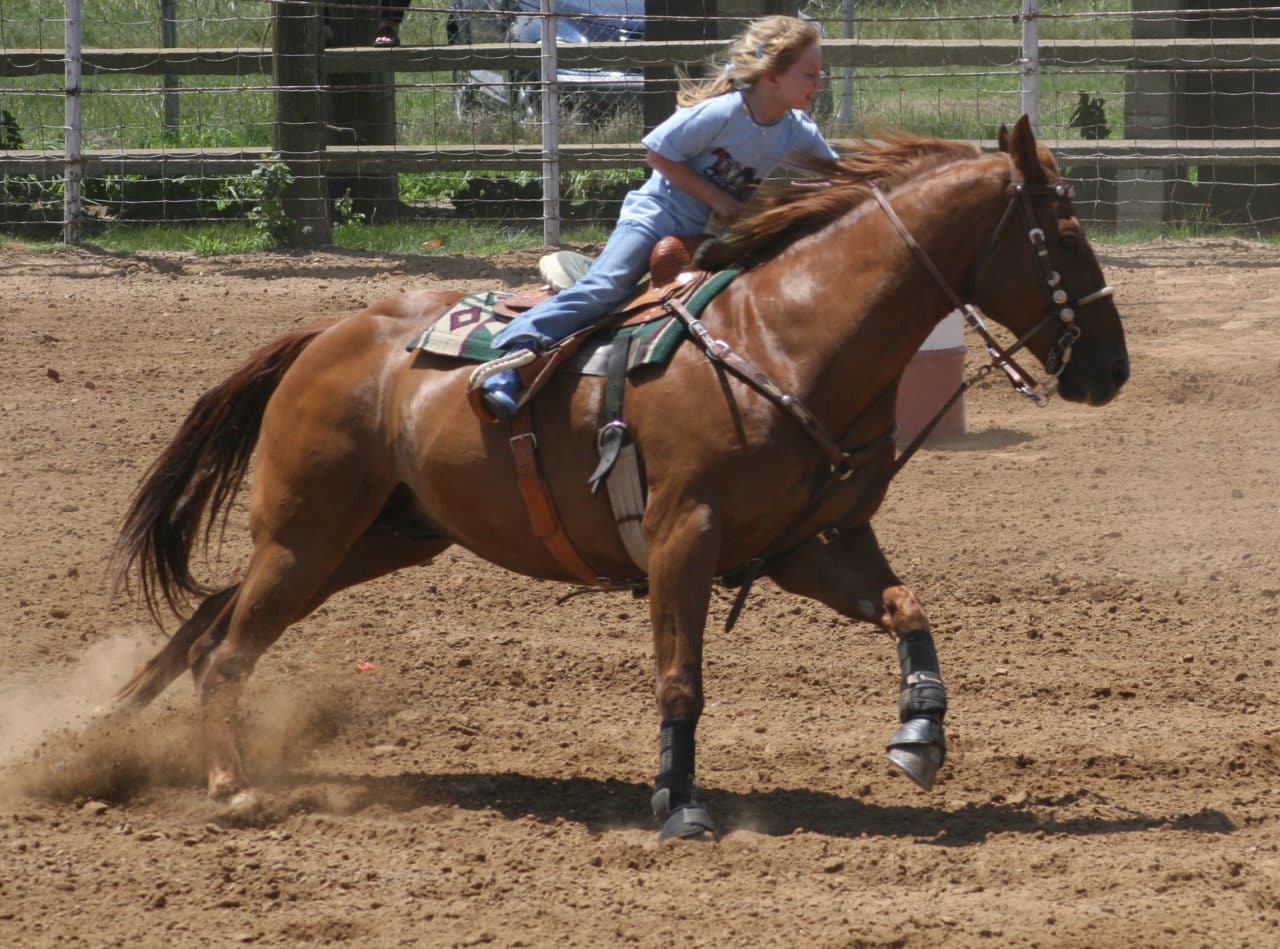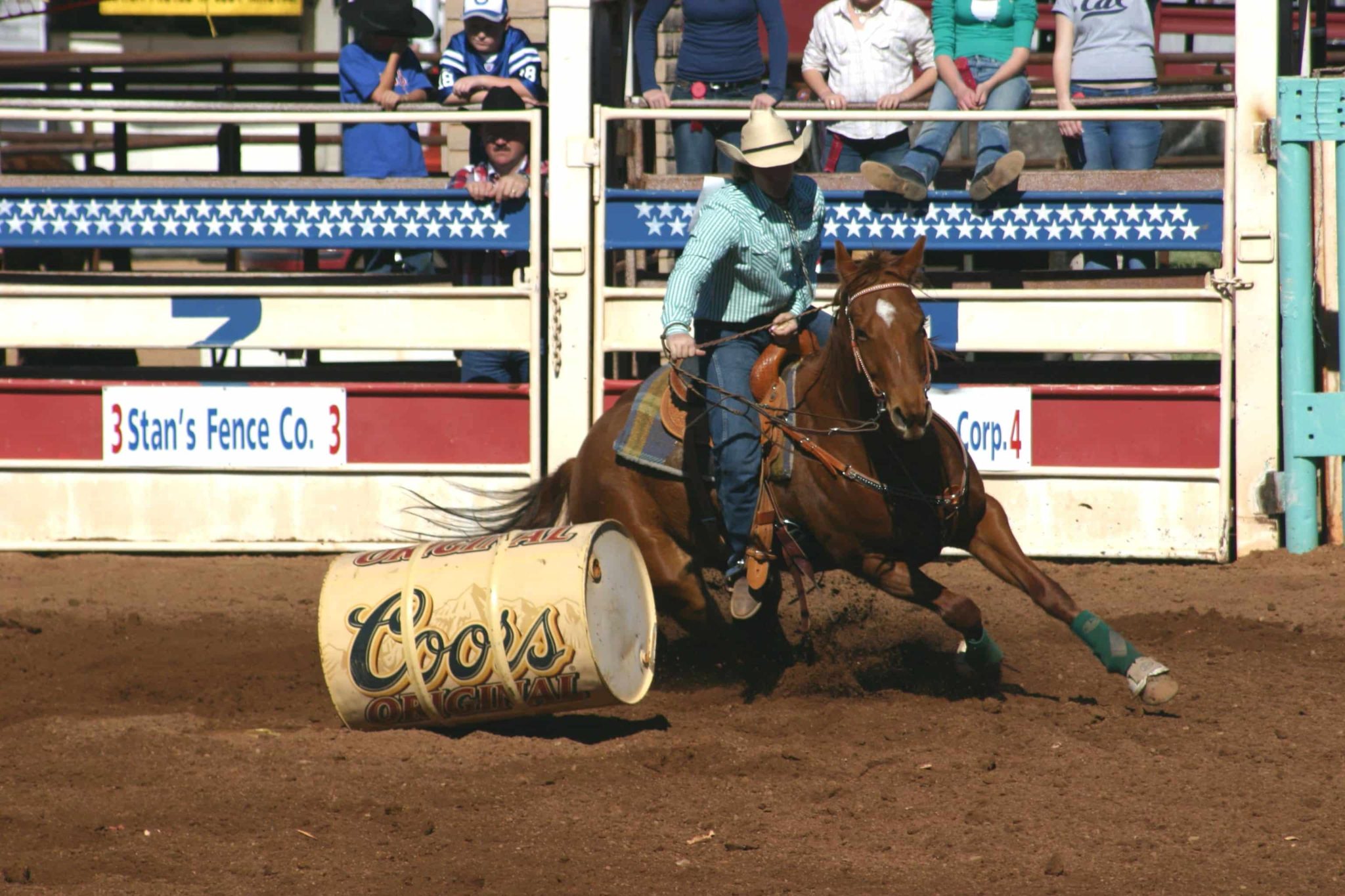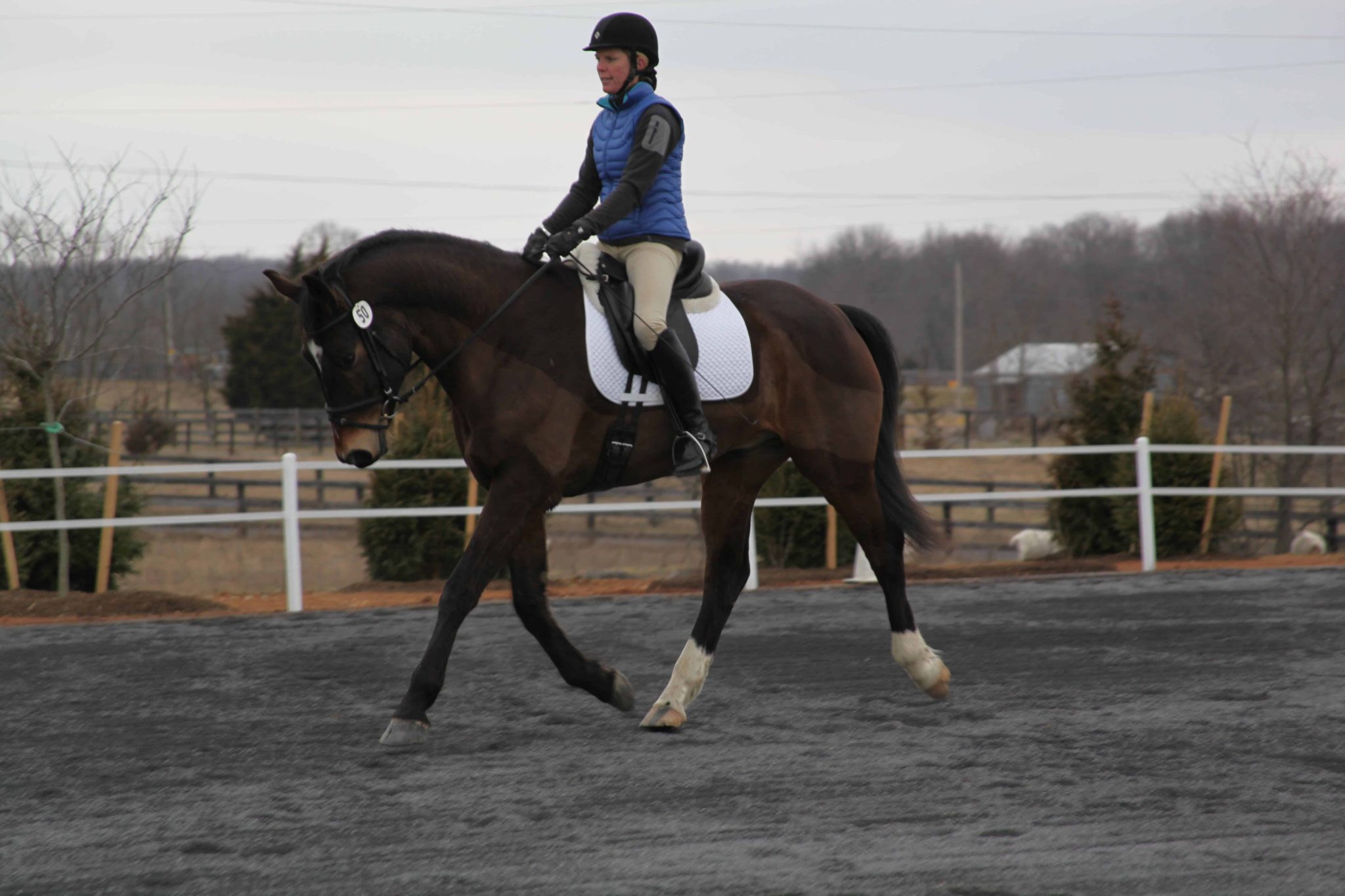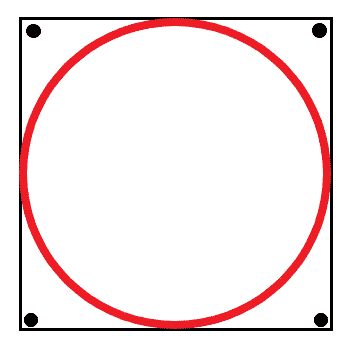
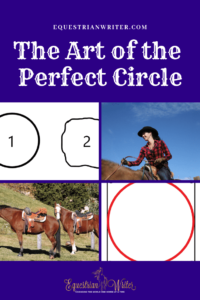
The circle is the basis for so many pattern classes in the show ring today. It seems like such a simple maneuver, but creating a perfect circle really is harder than you might first think. In the graphic below, you will see the circle we all aim to ride (Figure A.1) and the circle most of us actually ride (Figure A.2). Needless to say, there s quite a difference. So, how do we get from circle 2 to circle 1?

Riding a Circle
Just like everything else, we break the circle down into small pieces. You need to master each piece before you put them together in sequence to form the whole.
Prerequisites for a Circle
1. collection
2. round through the back
3. tracking up with the hind quarters
4. lifting through the shoulders
8. leg yields in both directions
9. forward movement
10. rhythm and tempo
11. ability to maintain speed and direction
12. ability to stay between the rider’s hand and legs
Break Down the Circle Into Steps
The key to riding a perfect circle is not to ride a circle, but rather an arc that forms a quarter of a circle. Put four perfect arcs together are you get one perfect circle. Scout out the arena. Put cones out to mark the corners of a square

(Figure B). The square will serve as a guide to mark the confines of the circle. When starting out, you should begin with a circle that is at least 60 to 70 feet (20 to 25
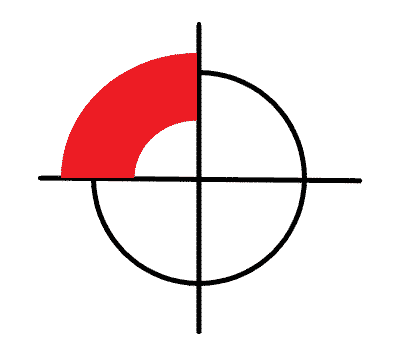
meters) if possible. The smaller the circle gets, the harder it is for both you and the horse to balance. Our goal is to make things easier, not harder. Some people like to start this off slower at the walk or the trot. That is fine if that is what you are comfortable with. However, I find that this is most effective and many horses pick to up faster if done from a lope.
Begin by breaking the circle down into four arcs (Figure C). Pick one arc to focus on and find the beginning and end points of that arc. Pick one direction to work in first, whichever lead is better for your horse. For many horses that will be the left lead, but that may differ depending on the horse. Don’t worry about perfecting the whole circle yet. Focus on perfecting that one arc.
[clickToTweet tweet=”The key to riding a perfect circle is not to ride a circle, but rather an arc that forms a quarter of a circle. Put four perfect arcs together are you get one perfect circle. Read more about mastering the art of the circle here:” quote=”The key to riding a perfect circle is not to ride a circle, but rather an arc that forms a quarter of a circle. Put four perfect arcs together are you get one perfect circle.”]
Correct Body Position on the Circle
As always, correct body position for both horse and rider is vital. As you lope your arc — for the sake of this example we will assume you are loping to the left on the left lead — tip your horse’s nose slightly to the inside. You should only be able to see the back corner of his left eye. Any further and he will be over bent. Any less and he will be straight and stiff through the rib cage which will completely ruin your circle. He should be soft through the poll, not bracing on the bit nor coming up above it. His back should be engaged, his neck relaxed and supple, his hindquarters tracking up under him and his shoulders up and reaching forward into the lope. He should have a slight bend through the rib cage. Again, too much or too little are equally as bad. The bend through his body from his poll to his tail should be consistent and soft.
You should keep your eyes forward, looking where you are going, your shoulders up and your hips parallel to your shoulders. Remember, his shoulders follow your shoulders. If you are dropping to the inside, he will drop to the inside. This is the biggest mistake riders make when attempting the circle.
Create Bend with Your Legs
Think of your body as the doorway. All you have to do is guide the horse in the right direction. Open the correct door and he will walk through it. Horses are very intelligent, yet simple creatures. They always take the path of least resistance. Put your inside leg forward just slightly to guide your horse around the turn.
Now, I know what you’re thinking: won’t my horse move away from my leg? He might the first time you try it because he doesn’t understand what you are asking. But he will quickly figure it out. This is actually a classical dressage technique that seems counterproductive at first glance, but when you think about it, it makes sense.
Remember how we discussed your horse mimicking your posture? If you drop to the inside, your horse will automatically drop his shoulder. What happens if you are circling to the left and you put your left leg back? Your hip drops which drops your shoulder which drops your horse’s shoulder and it all goes to hell from there. But what happens if you put that left leg forward? Your hip elevates just slightly which brings your shoulder up — don’t let that right hip and shoulder drop though. This, in turn allows your horse’s left shoulder the freedom to come up and stretch forward on the left lead like you want him to.
Guide Your Horse Through the Arc with Your Body
The key to a perfect arc is your body position. You leg establish the bend through the rib cage. Your inside leg comes forward to keep the shoulder from dropping and your outside leg slides back just slightly to nudge the hip to the inside and encourage that bend. The movement of the hip shoulder barely be noticeable to a spectator, but it is vitally important none the less.
Another key is not to get up in the horse’s face. Once you’ve got the bend, let him go. If you need to constantly micromanage to keep that bend, he’s not ready for full circles. Practice small arc until he is really consistent before asking for more. So many horses would do so much better is the riders would just get off their face. I’m not saying you can’t ride with contact. It is possible to ride with contact without being all up in your horse’s face. As a western rider with a basis in classical dressage, I don’t like slack reins, but I don’t ride in full contact either. I recommend a happy medium.
Practice Makes Perfect
Don’t get frustrated if your horse doesn’t get it overnight. First of all, more often than not it’s the rider, not the horse that’s the problem. Even so, if your horse has developed bad habits, they aren’t going to go away as soon as you fix your own riding. Remember to be fair to your horse and break thing down into bite sized pieces. Always set him up for success to build his confidence. If he can only get in a small arc today, that’s perfectly fine. It’s still a step in the right direction.
